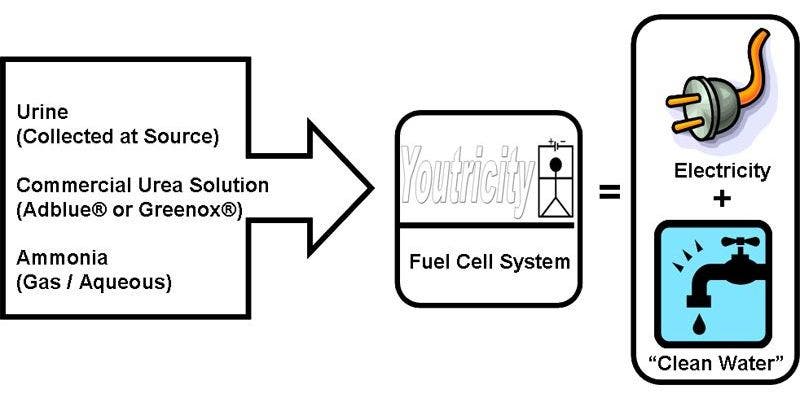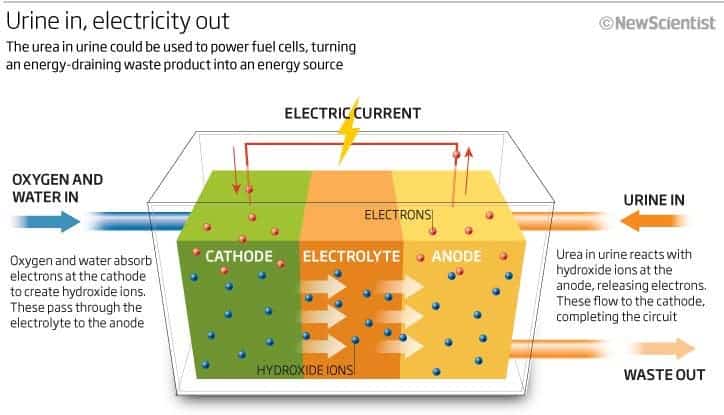
And no, I’m not taking the piss.
Urine, a very versatile waste among other things, has been found useful in all sorts of fields, from curing jellyfish stings, to saving ones life in the desert by soiling a turban to cool the head, or more commonly used as a fertilizer. Most of us, however, just dump it in a toilet bowl and flush. What a waste to waste, apparently, since a group of scientists from Heriot-Watt University in Edinburgh, UK have developed a prototype which can turn urine into energy called the Carbamide Power System. The prototype has been developed by Dr Shanwen Tao and his research partner Dr Rong Lan, who’ve received a £130,000 EPSRC grant to develop it
I’m a nutshell this works thanks to very cheap fuel cells which convert chemical energy into electricity through an electrochemical process that does not require combustion, with heat as the by-product. Traditional fuel cells usually involve hydrogen or methanol at one side and oxygen or air at the other, separated by a specialized ionic-conducting membrane. Cost/efficiency is a real issue however since the membrane fuel cells catalysts needed for storing hidrogen or methanol is extremely expensive to manufacture and very dangerous to transport or store.
The Carbamide Power System utilities a far cheaper full cell system, though, one that runs on urea, or carbamide, a mass manufactured fertilizer, which can also be found in human or animal urine. Urine contains roughly 2 per cent urea, and each urea molecule contains four hydrogen atoms, which, crucially, are less tightly bound to the molecule than the hydrogen in water.

Now, you can imagine that the actual electrical power capabilities of this new technology are very limited, seeing how a liter of urine can barely power a light bulb, but what about an office building with 200-300 people or a whole apartment complex? Mainstream applications can be difficult to implement, but why not use it in the farming industry? Farms deal with hundreds of tons of waste every month, so here’s a chance to transform the animal urine into energy that might eventually power the whole farm. Isolated regions, like for say a military sub, would probably have the most to benefit from this.
Urea solutions are already in use in Europe for heavy goods trucks under UE law to lower the toxic nitrogen oxides produced when diesel combusts. More than 6000 petrol stations and other outlets across Europe sell 32.5 per cent urea solutions under the trade name AdBlue. Actually according to Dr. Tao, a regular adult human produces enough urine each year to drive a car 2700 kilometers on energy from the urea it contains.
“The infrastructure is already there, and the cost is only around 40 pence a litre,” says Dr. Tao. If you had a car powered by a urea fuel cell, “you could just go to a normal petrol station, pump in urea and drive away”, he says.
“Growing up in rural eastern China I was aware of the use of urea as an agricultural fertiliser. When I became a chemist and was looking at fuel cell development I thought of using it in the process.
“We are only at prototype stage at present, but if this renewable material can be used as a commercially viable and environmentally friendly energy source then we will be absolutely delighted, and many people around the world will benefit.”
via New Scientist


